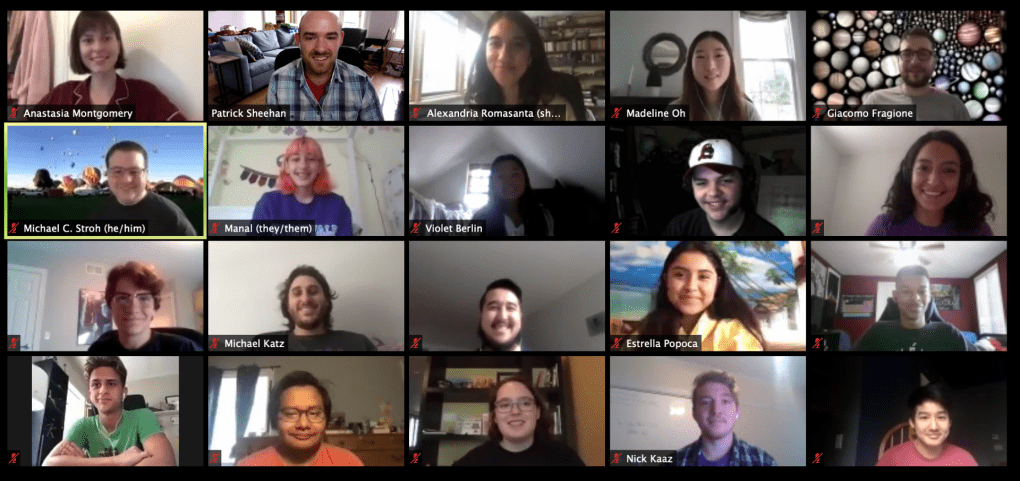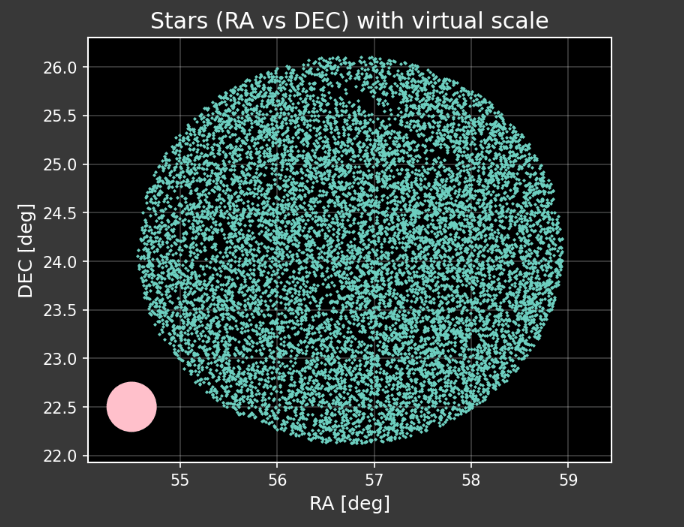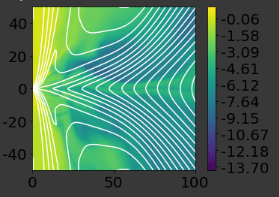
Top to bottom, left to right:
Students: Madeline Oh, Manal Vishnoi, Violet Berlin, August Masley, Mark Wehner, Estrella Popoca, Julien Kearns, Nicholas Hurst, Francisco Pantoja, JT Turner, Brandon Lu
Not pictured: Sam Zacks
Northwestern Scientists and Staff: Anastasia Montgomery, Patrick Sheehan, Alexandria Romasanta, Giacomo Fragione, Michael Stroh, Monica Gallegos-Garcia, Michael Katz, Kyle Rocha, Nick Kaaz
Program Staff
Who are we?
Program Director: Dr. Patrick Sheehan is an NSF Astronomy & Astrophysics Postdoctoral Fellow, and has over nine summers of experience in leading Astronomy focused high school summer programs.
The 2020 research mentors and instructors are listed below:
Howard Chen, Lindsay DeMarchi, Monica Gallego-García, Wynn Jacobson-Galán, Joseph Michail, Stacy Montgomery, Anya Nugent, Nick Kaaz, Jillian Rastinejad, Kyle Rocha, Deanna Coppejans, Rocco Coppejans, Erin Cox, Giacomo Fragione, Kerry Paterson, Tjistke Starkenberg, Michael Stroh, Camille Liotine
Research Projects
What research will you do?
The 2020 cohort of High School students worked on the following research projects, created by the CIERA scientists below:
-
-
- The Velocities of Stars in the Milky Way – Project Designed by Michael Stroh
- The Habitable Zones of Other Worlds in the Cosmos – Project Designed by Giacomo Fragione
- The Effects of Stellar X-Ray and UV Flares on Exoplanetary Atmospheres – Project Designed by Howard Chen
- Climate Models of the Earth – Project Designed by Stacy Montgomery
- Short Gamma Ray Burst Afterglow Fitting – Project Designed by Jillian Rastinejad
- How Bright are Accreting Black Holes in Binary Systems? – Project Designed by Camille Liotine
- Stellar Evolution: The Dynamic Lives of Stars – Project Designed by Kyle Rocha
- Binary Stars with COSMIC – Project Designed by Monica Gallegos-Garcia
- How Can You Extract Energy from Black Holes? – Project Designed by Nick Kaaz
-
Here are some examples of plots that the 2020 cohort came up with based on these projects

This plot was created by August Masley and shows stars inside the Pleiades Cluster and stars outside the cluster, but appearing in the same area in the sky. It’s my favorite because of the clear representation of the HR Diagram in the outside stars, and the fact that the Pleiades stars are distinctly related to each other and follow the main sequence.

This is a plot created by Brandon Lu and is of a lightcurve for a star, measured from different light frequencies. On the y-axis is the magnitude of the brightness, whereas the x-axis is time in days.

This plot was created by Estrella Popoca.

The plot was created by Francisco Pantoja. It is meant to represent an exoplanets ozone levels (y-axis) when hit with a solar flare (green) and when it’s not hit (red). We can see that when the exoplanet is hit with a solar flare the pressure in the ozone increases dramatically compared to when an exoplanet is not hit.

This graph was created by JT Turner and is a simulation of a star producing stellar flares. Time is on the x – axis and flux is on the y – axis.

This plot was created by Julien Kearns.
Rather than creating a plot from an astronomy research project, Julien decided to make their own original plot of a candy stand!

This plot was created by Mark Wehner. It measures the gas density rho as a function of position, with magnetic field lines plotted on top of it. The beautiful curves and color gradient of the graph remind me of images in complex analysis, most notably the plot of the Riemann Zeta Function.

This plot was created by Nicholas Hurst.
Program Schedule
When is it?
Dates: June 29 – August 7, 2020
Program Content
What will you do?
2020 PROGRAM UPDATE: the High School Summer Research Experience in Astronomy will now run remotely. We are working very hard working hard to create the best possible remote-learning experience. The revised program will continue to focus on developing technical skills and other research skills, through python programming lessons, astronomy lessons. The 2020 program will feature a series of week-long research projects put together by CIERA scientists based on their own research interests.
Activities include:
Computer Programming Courses: Coursework includes an extensive introduction to programming and scientific data analysis with the Python programming language, with additional topics such as:
- Introduction to the Unix command line
- Jupyter notebooks
- GitHub
- High Performance Computing (supercomputers)
- Collaborative coding
- Data visualization
Introduction to Astronomy Courses: Lectures covering a wide variety of astronomy topics, such as
- Stars
- Planets
- Galaxies
- Cosmology
- Telescopes
- Black Holes
- Gravitational Waves
Students enrolled in the program will:
- take computer programming classes
- participate in introductory astrophysics courses
- tackle selected readings and structured assignments
Special programming includes:
- panel discussions to learn about careers in astronomy and college applications

